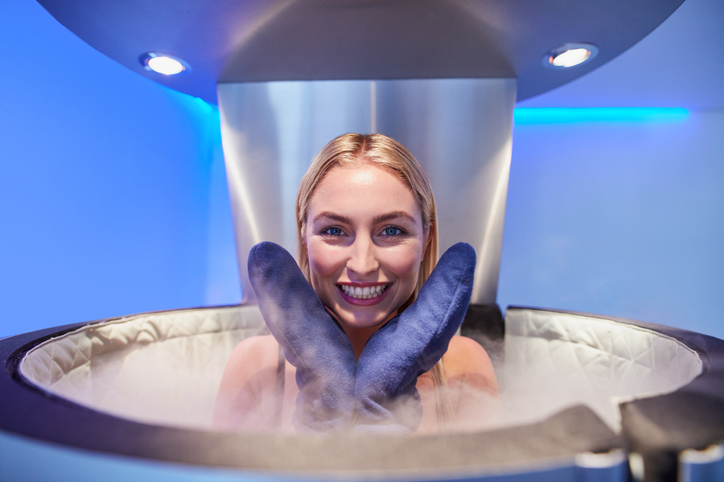Give Diabetes the Cold Shoulder By Shivering

By Joy Stephenson-Laws, JD, Founder
Type 2 diabetes is one of the most prevalent and serious health issues in America. According to the Centers for Disease Control and Prevention (CDC), 37.3 million people in the United States are diabetic and 96 million people (18+) are prediabetic. A person with type 2 diabetes usually has insulin resistance. Insulin is a hormone made by the pancreas “that acts like a key to let blood sugar into the cells in your body for use as energy,” reports the CDC.
“Your pancreas makes more insulin [when you have insulin resistance] to try to get cells to respond. Eventually your pancreas can’t keep up, and your blood sugar rises, setting the stage for prediabetes and type 2 diabetes.”
Having high blood sugar can increase the risk of developing multiple health issues such as heart disease, kidney disease, eye disease, nerve damage, gum disease and more. If you are someone who has been diagnosed with type 2 diabetes, it is important to do everything in your power to manage blood sugar levels in order to keep the condition under control and hopefully avoid any complications resulting from diabetes. If caught early, type 2 diabetes can usually be managed with a healthy diet and regular exercise, but many Americans do end up relying on insulin and other medications.
The National Institutes of Health (NIH) shared an article reporting that by 2030 about 40 million diabetic Americans who need insulin to manage their condition may not have access to it due to a national insulin shortage. This is extremely concerning.
This is why it is necessary for prediabetic and diabetic Americans to learn about alternative therapies if feasible. One of these therapies may be cold therapy.
New research conducted in The Netherlands found evidence which suggested that repeated exposure to cold, specifically cold that induced shivering, improved glucose tolerance, reduced fasting blood sugar and reduced blood fat levels. It even reduced blood pressure among overweight and obese adults.

We mainly have white fat, but we all have small amounts of brown fat (we also have beige fat, a combination of brown and white fat cells).
“Brown fat, also called brown adipose tissue, is a type of body fat that keeps you warm when you get cold. Brown fat also stores energy and helps your body burn calories. Brown fat starts working (activates) in cold temperatures,” according to the Cleveland Clinic.
People who are obese and have diabetes have less brown fat than the average, non-diabetic person who is at a healthy weight.
Shivering can burn more calories and produce more heat, according to Adam Sellers, one of the leads of the study and referenced in this Medical Xpress report.
Study participants included 11 men and four postmenopausal women who were overweight or obese (all were between the ages of 40-75). They were exposed to 10 consecutive days of cold that induced shivering. More specifically, they shivered for one hour a day and were exposed to temperatures from 32°C to 10°C.
“The findings showed that repeated cold-induced shivering significantly reduced average fasting plasma glucose concentrations from 5.84 to 5.67 mmol/L, and improved glucose tolerance by 6%,” reports Medical Xpress.
“Interestingly, fasting plasma triglyceride and free-fatty acid concentrations were markedly reduced by 32% and 11%, respectively. These are the major fat fuels in the body, and are thought to raise the risk of cardiovascular disease and contribute to insulin resistance.”
Furthermore, the cold therapy exposure reduced blood pressure.
Cryotherapy
To be honest, I am not surprised by the results of this study. Cold therapy, also called cryotherapy, is known to help reduce chronic inflammation, reduce pain, help with weight loss, improve sleep and so much more.
I am not saying that people with type 2 diabetes should depend on cold therapy to manage their condition, however, it may be a great therapy if approved by a competent healthcare professional. Cryotherapy essentially helps trigger the body’s natural response to healing, so why not take advantage of something that can help your body operate like the incredible machine that it is.
I myself am not diabetic, but I use cryotherapy as one of the tools in my proactive healthcare arsenal. I have found that I have less pain, better sleep and reduced blood pressure. I highly recommend it if you get the green light from your doctor.
Finally, for more information on how you can help prevent or manage type 2 diabetes, check out these pH Lab blogs.
Enjoy your healthy life!
Disclaimer: This article is not intended to provide medical advice. Please consult with your doctor or another competent healthcare practitioner to get specific medical advice for your situation.
The pH professional health care team includes recognized experts from a variety of health care and related disciplines, including physicians, attorneys, nutritionists, nurses, and certified fitness instructors. This team also includes the members of the pH Medical Advisory Board, which constantly monitors all pH programs, products, and services. To learn more about the pH Medical Advisory Board, click here.







